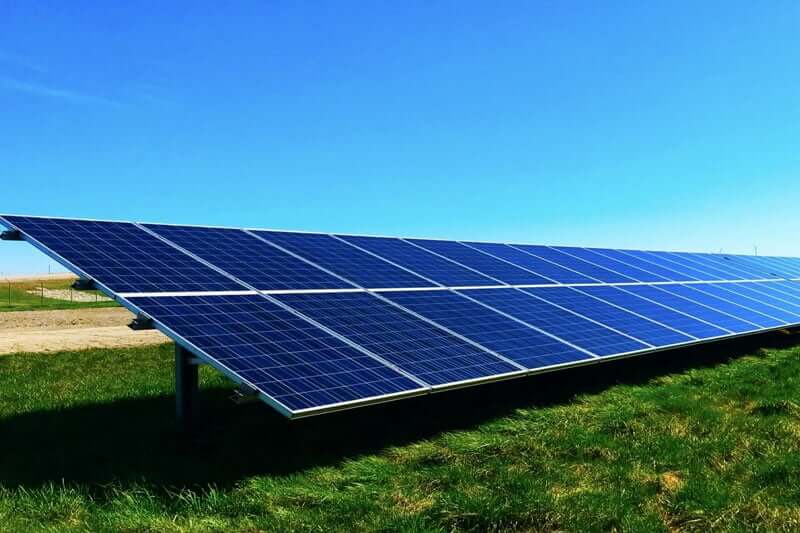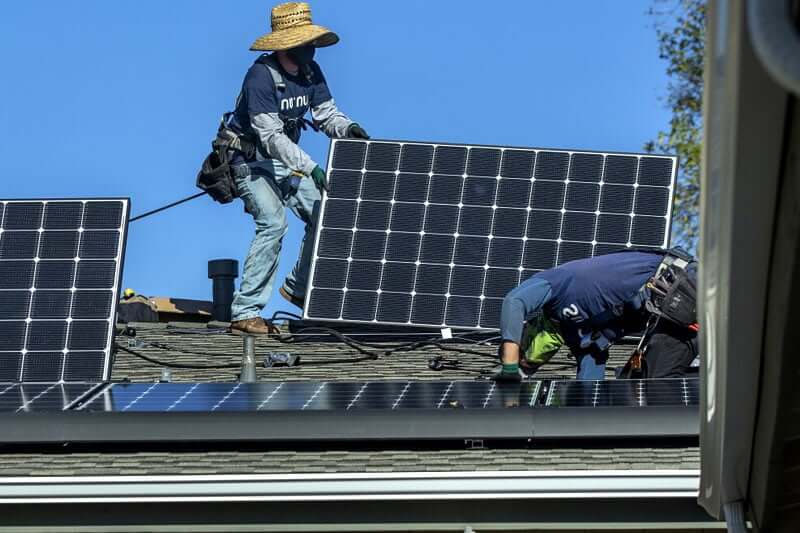Home Why Are Solar Panels So Expensive
Why Are Solar Panels So Expensive?
For many people, putting money into solar panels is a significant financial undertaking. Without government incentives and the advantages provided by net metering, a good number of Australian households would find it challenging to install solar panels on their rooftops.
Solar panels are expensive because of 3 main factors:
Made from expensive raw materials – Silicon, which is a major component in most solar cells, is difficult and expensive to purify.
Require professional installation – A large cost of solar energy is the fitting and connection to your home and grid. It takes 5 – 6 hours for a team of 3 electricians to get the job completed.
Precision of manufacturing – The infrastructure required in manufacturing solar panels is vast and the process is complicate, even though the end product looks fairly basic.
The end to end process of producing and fitting solar panels is expensive, however, when you break down the initial cost and the ROI, you can pay the panels off in 3 – 4 years and enjoy 20 + years of super cheap energy. #worth-it

Table of Contents
ToggleWhy Solar Panels Are So Expensive
Expensive Raw Materials
Solar panels are produced from difficult-to-get raw materials. Silicon, a major component of solar panels, is expensive. Solar panels are made from top-quality silicon making their raw materials expensive.
Further, solar batteries are made from lithium. Another difficult-to-get and expensive material. Other components such as inverters are also made with expensive and rare raw materials to make them superior electrical components.
So, if a product is made from expensive raw materials, it will have a high price tag in the market.
Require Professional Installation
Another aspect of solar panels that makes them expensive is the need for installation by professionals. In Australia, all solar panels must be sold and installed by professional installers. These solar installers charge a high rate for their service.
Solar panels are electrical components. Thus, you risk your life if you install solar panels on your home without the right skills. You cannot DIY a solar installation project to save on the cost.
Where the solar panels are installed may also determine their cost. Rooftop installation is the most common and cheapest installation method. Installing elsewhere may require extra installation and mounting gear which increases the cost of the solar system.
Production and manufacturing technology
There are many solar panel brands in the market. Each brand manufacturer has its technology and technique for solar panel manufacturing.
Manufacturers of high-quality and expensive solar panels have their way of combining the raw materials to create a high-quality solar panel. The better the quality of the solar panel, the higher its efficiency and the higher the price.
Lower-priced solar panels are usually low-quality panels. They produce less electricity compared to more expensive and better-quality solar panels.
Solar panels will be expensive to create the illusion of better quality. Solar panels with additional features such as a VPP are more expensive than solar panels without additional features.
Roof Type
Different types of homes have different types of roofs. The more complicated your roof design the more expensive it is to install solar panels. A simple roof design makes it easy to install solar panels without incurring extra costs.
Sometimes, depending on the state of your roof, you may have to replace it. This is an additional cost that makes solar panels installation projects more expensive.

Productive Capacity
How much you pay for a solar panel is determined by its rated productive capacity. The higher the rating the more expensive the solar panels. Its a bit like computer and micro processcors. The larger the capacity the larger the output, the more expensive the are the produce.
Similarly, the larger a solar system you purchase, the more you pay. A 6kW solar system is cheaper than a 10kW solar system. The larger a solar system, the more solar panels it uses and the more roof space it requires.
Has The Cost Of Solar Panels Reduced
Over the last decade, the cost of solar systems has been coming down gradually. Prices are now three times lower than they were about 5-10 years ago. With lower prices, more and more people are willing to purchase solar systems.
Here are some of the factors that have led to the fall in the price of solar panels.
Increasing Demand
Over the last decade, more and more Australians have adopted the use of solar for their homes. The leading reason for the adoption of solar is the rising high bills.
Rooftop solar panels have become the solution for the ever-rising electricity bills. This has made Australia the leading country in the world in the use of solar power.
As more and more people have acquired solar panels, more brands have entered the market which has led to more competition and lower prices for solar panels in the country.
Advanced Production Technology
Manufacturing solar panels is an expensive process since it is hard to get their raw materials. Over the years, the technology of producing solar panels has advanced and improved. This has led to the growth of many solar panel manufacturing companies.
A large number of manufacturers in the market has led to a reduction in the price of the panels. With more manufacturers in the market, there is a range of different qualities and sizes of solar panels you can buy.
Government Intervention
In Australia, the government has over the last few years helped lower the price of solar panels in the country.
The federal government has a solar panel subsidy program that helps lower the price of solar panels. The state governments have also introduced programs that work together with the federal-state programs to lower the price of solar panels.
In these government incentives, the bigger the solar panels you buy, the larger the discount you receive. You can also get interest-free loans to acquire solar panels.
With these incentives, there are more and more people seeking to purchase panels. Similarly, a range of manufacturers want more people to buy their solar panels. Consequently, it has led to a reduction in the price of solar panels.
The government intends to end all solar incentives by the year 2030 as its efforts have helped lower the prices. With this knowledge, more and more people are purchasing solar panels before the incentives are completely phased out.
How To Save Money When Buying Solar Panels
Buy The Right Size Of Solar System For Your Home
To reduce your spending on solar panels, buy the right size of solar necessary for your home.
The larger the solar panels you purchase, the more you spend.
To find out the best solar panel for your home, check your electricity consumption. Then, buy a solar system that supplies your daily electricity consumption.
You can buy a larger system than you currently need if you believe you may need the high capacity in the future. However, purchasing a larger capacity solar system means using more money for the power you can’t fully utilize. It will take you much longer to recover your investment if you buy a larger system.
Buy An Upgradeable System
When buying your solar system, it is essential to consider the future. In the future, you may need a larger-capacity solar system for your home as you may have more power needs.
If you are purchasing a solar system right now, talk to your installer so that you can get an easily upgradeable system.
To upgrade your solar system, you may require a few extra solar panels and maybe a battery system. The additional solar panels will have your system increase its capacity, the battery system will help store the excess power to ease the availability of solar power in your home.
Take Advantage Of Government Incentives
To lower the cost of the purchase of solar systems, take advantage of the existing government incentives before they are completely phased out. Every year you delay your purchase decision, the less the amount of the government incentive and thus, the more you pay.
To get a solar panel rebate when you buy solar panels, you must purchase them from Clean Energy Council accredited installers. It will ensure that you get up to $3,000 off on your purchase depending on the size of your solar panels.
The larger the capacity of your solar system, the higher the amount of rebate you are likely to receive when purchasing solar panels.
You can also get low-interest loans to purchase and install solar panels in your
home.
Compare Price Among Different Installers
Before you purchase solar panels, find out how much they cost from different solar panel installers.
Different brands of solar panels cost differently even for the same size of solar panels. Making comparisons ensures that you know the price range of the solar system size you require.
Use This FREE Tool
Gosolarquotes.com.au is a FREE tool where you can get three comparisons easily.
- At the top of the page, enter your zip code then fill the subsequent form.
- Provide more details on your solar project.
- Your information will be sent to professional installers near you all voted best priced who will also price your solar job
You can hire any of the three installers to install solar panels in your home.
Can You DIY Solar System Installation?
If you have the right skills and tools to install a solar system in your home, you can DIY.
However, if you DIY, you may lose out on the government solar rebate. To receive the solar rebate, your solar panels must be installed by a Clean Energy Council accredited installer.
A DIY installation will also see you lose out on feed-in tariff agreements with electricity retailers. Electricity retailers want to make sure that your solar system is properly installed by a pro before you can start exporting power to the grid.
Solar system installation involves electricity connection. Therefore, it is necessary that the installation is carried out by a professional. Anyone else can easily get into a fatal accident when they touch the wrong wires of the electrical connection.

How Long Does It Take For A Solar System To Payback Itself?
If you buy the right size of the solar system for your home, it takes 3-5 years to get a return on your investment. After you have made your investment back, you can enjoy free electricity for the lifetime of the solar system.
You make back your money by how much savings you can make on your electricity bills. When you install your solar panels, you reduce your usage and reliance on grid electricity. As a result, you have less to pay for your electricity.
How long it takes to recover your investment in solar depends on your electricity consumption. Increased use of solar ensures that you make a quicker return as you save more on your electricity bills.
How Many Australians Have Solar Systems In Their Home?
Australia is the leading country in the world in the use of solar power. This is because Australia has a good climate for solar with a majority of the year enjoying lots of sunshine. Additionally, the government has put in place price incentives to lower the cost for all who want to purchase a solar system for their home and small business.
In Australia, over 3 million households have installed solar systems. This is about 25% of all households in Australia. The average size of a household solar system is 6.6kW. It produces enough power for an ordinary household.
Many households still don’t have solar battery systems due to their cost.
Compare Solar Panel Quotes
Table of Contents
Toggle









